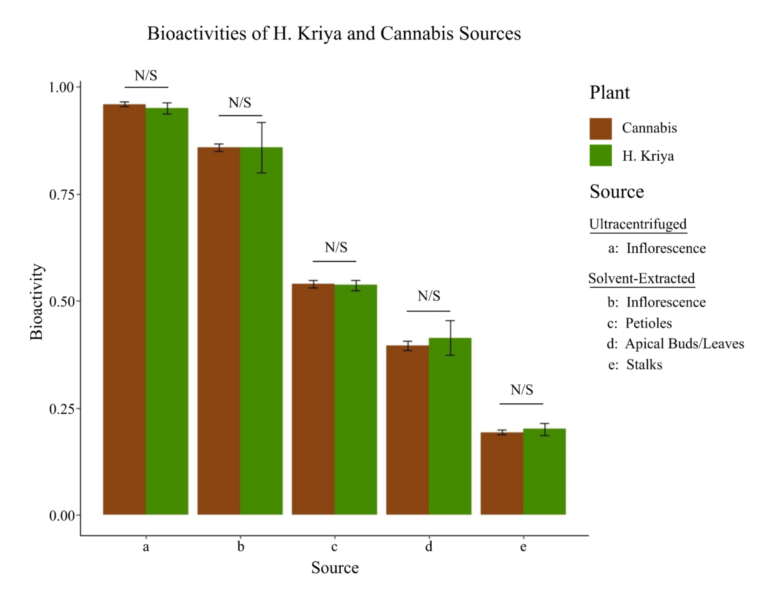MEASURING THE BIOACTIVITY OF PHYTOCANNABINOID CANNABIDIOL FROM CANNABIS SOURCES, AND A NOVEL NON-CANNABIS SOURCE.

ABSTRACT
Phytocannabinoid Cannabidiol (CBD) has been shown to elicit a great many immunological benefits. It acts on the endocannabinoid system, namely through interactions with cannabinoid receptor 2 (CB2). CBD-CB2 affinity, which we refer to as bioactivity, is rarely tested for clinical samples.
We believe that uncontrolled variation in bioactivity levels have been silently confounding many CBD experiments. In our four-part study, we validate an efficient bioactivity test that can enable greater scientific control over CBD studies. We use it to compare the bioactivity of CBD obtained from different plant organs, and we also studied whether processing methods play a role in determining bioactivity. We also examine the bioactivity and processing factors of a novel non-cannabis plant capable of producing CBD in commercial quantities, named Humulus Kriya (H. Kriya, U.S. Patent No. 15/932,529, 2018).
We also test the bioactivity of some CBD isolates/extracts currently sold in the market, and compare them with a CBD product called ImmunAG, which was extracted from the inflorescence of H. Kriya. We find that the CBD from the inflorescence of the plant produces the highest bioactivity, followed by the apical buds/leaves, the petioles, and finally the stalk. We find that H. Kriya has a bioactivity profile similar to Cannabis Sativa. We find that the bioactivity levels among cannabis-based commercial CBD products are quite low, and variable.
We find significantly higher bioactivity levels in ImmunAG.